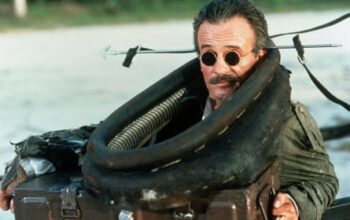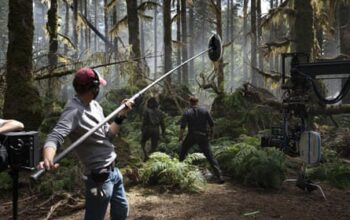V
Art in visual form does not always translate seamlessly to film, as the camera can create a disconnect from the artwork and its intended impact. However, Wim Wenders defies this pattern with his exceptional documentary Anselm (Curzon Home Cinema), which effectively captures the raw and organic textures of German painter and sculptor Anselm Kiefer’s pieces. The film is particularly captivating as it delves into the process behind Kiefer’s large-scale works and their dynamic movements.
A significant portion of its reward was derived from Wenders’ innovative use of 3D technology on the big screen. While this element is lost in the film’s VOD release, the connection it draws between Kiefer’s complex persona and his work remains engaging. The film also effectively bridges the artist with his younger, dramatized selves. In terms of documentaries about artists, Anselm may not be as candid as Jack Hazan’s 1973 film A Bigger Splash (available on Netflix), but it belongs in the same league. Hazan’s film closely follows the breakdown of David Hockney’s relationship with his former lover Peter Schlesinger over a period of three years, and its impact on Hockney’s art and perspective. It alternates between unobtrusive observation and moments of openly queer fantasy, treating its subject with a genuine fascination rather than blind admiration.
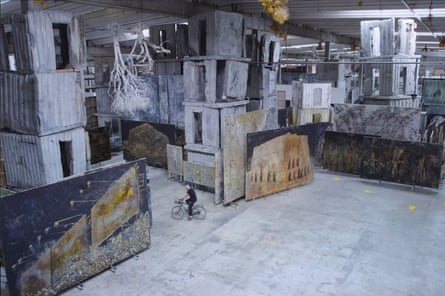
Corinna Belz’s film, Gerhard Richter Painting (2011), is a straightforward documentary that provides insight into the artist’s work and personality. Despite its simplicity, the film is just as informative as other documentaries on Richter, thanks to its patient observation of his canvas preparation and layering process (which is surprisingly captivating). Unlike other portraits by directors Wenders and Hazan, this film features an artist who is already famous in their lifetime. Halina Ryschka’s 2019 documentary, Beyond the Visible: Hilma af Klint, is a dedicated effort to showcase the talents of a female artist, the Swedish abstract mystic who was not recognized until after her death in 1944. While the film may not be as radical as Af Klint herself, it effectively presents her case for recognition.
Many famous artists from the past are often portrayed in biopics, with the same names appearing repeatedly. Vincent van Gogh, in particular, has been frequently depicted by filmmakers. Kirk Douglas portrayed him with a troubled strength in Vincente Minnelli’s romanticized yet stunning Lust for Life (1956). Willem Dafoe’s performance in the more recent At Eternity’s Gate is considered to be more accurate, although the film by fellow artist Julian Schnabel was overly detailed. The animated film Loving Vincent (2017) relies on the artwork to tell the story. Unfortunately, Robert Altman’s 1990 film Vincent & Theo, which is arguably the best portrayal of Van Gogh, is not available for streaming in the UK.
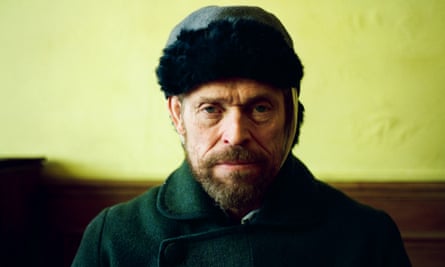
Display the image in full screen mode.
Schnabel’s artistic perspective enhanced the energy of his subject in his first film, Basquiat (available on Apple TV) in 1996, with Jeffrey Wright’s intense and restless portrayal of the tragic young postmodernist. Ed Harris’s Pollock also stands out for its raw emotional intensity, capturing Jackson Pollock’s stoic masculinity and mania, and earning an Oscar for Marcia Gay Harden’s powerful performance as Lee Krasner. Mike Leigh’s Mr Turner may have a picturesque quality, but it delves intelligently into the underlying complacency of JMW Turner’s paintings. Julie Taymor’s Frida showcases the vibrant visual style of Frida Kahlo’s art, but lacks the bold and experimental sensuality that Derek Jarman brilliantly captured in his erotic tribute to Caravaggio.
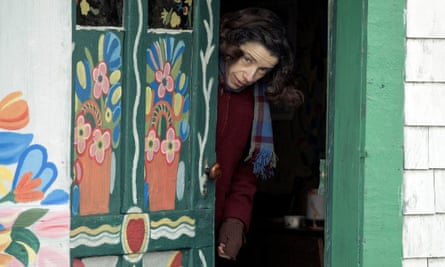
Artist biopics are often best off, however, when they take on less obvious subjects. At the intimate end of that scale, I have great affection for Maudie, Aisling Walsh’s tender, tactile study of arthritis-stricken folk artist Maud Lewis, beautifully played by Sally Hawkins. But the daddy of them all is Andrei Tarkovsky’s immense Andrei Rublev, a portrait of a 15th-century Russian icon painter that distils a whole national relationship to art, poetry and faith in its one brooding life story.
All titles can be rented on various platforms, unless otherwise noted.
services
Additionally available on streaming platforms.
Earth Mama
(We Are Parable)
Savanah Leaf’s gutsy, Bafta-nominated debut feature rests on a stunning performance by Tia Nomore as a pregnant woman in recovery from drug addiction, trying to reassemble her life and her family in the San Francisco Bay Area. It may sound like standard-issue miserablism, but there’s unusual beauty and humour in its worldview.

Manodrome
John Trengove, a director from South Africa, gained a lot of recognition for his powerful LGBTQ+ coming-of-age film, The Wound. His latest film, which features a more well-known cast, was released directly to video on demand. This movie also delves into the topic of toxic masculinity, as it follows a soon-to-be father (played brilliantly by Jesse Eisenberg) who becomes involved in a male-dominated cult. While the film’s commentary on incel culture is direct, it still manages to have a chilling effect on viewers.
Night Swim
A pleasant family living in the suburbs discovers that their pool is possessed – sounds plausible. The newest horror film from Blumhouse utilizes some cleverly crafted jump scares based on its seemingly absurd concept, enhanced by the appeal of its visual representation. There is an inherently cinematic quality to swimming pools, whether they are used for murder or not.
Source: theguardian.com
